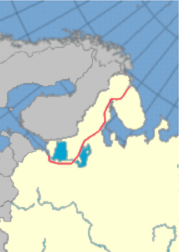Kirov Railway
This article does not cite any sources. (July 2021) |

Kirov Railway | |||||||||||||||||||||||||||||||||||||||||||||||||||||||||||||||||||||||||||||||||||||||||||||||||||||||||||||||||||||||||||||||||||||||||||||||||||||||||||||||||||||||||||||||||||||||||||||||||||||||||||||||||||||||||||||||||||||||||||||||||||||||||||||||||||||||||||||||||||||||||||||||||||||||||||||||||||||||||||||||||||||||||||||||||||||||||||||||||||||||||||||||||||||||||||||||||||||||||||||||||||||
|---|---|---|---|---|---|---|---|---|---|---|---|---|---|---|---|---|---|---|---|---|---|---|---|---|---|---|---|---|---|---|---|---|---|---|---|---|---|---|---|---|---|---|---|---|---|---|---|---|---|---|---|---|---|---|---|---|---|---|---|---|---|---|---|---|---|---|---|---|---|---|---|---|---|---|---|---|---|---|---|---|---|---|---|---|---|---|---|---|---|---|---|---|---|---|---|---|---|---|---|---|---|---|---|---|---|---|---|---|---|---|---|---|---|---|---|---|---|---|---|---|---|---|---|---|---|---|---|---|---|---|---|---|---|---|---|---|---|---|---|---|---|---|---|---|---|---|---|---|---|---|---|---|---|---|---|---|---|---|---|---|---|---|---|---|---|---|---|---|---|---|---|---|---|---|---|---|---|---|---|---|---|---|---|---|---|---|---|---|---|---|---|---|---|---|---|---|---|---|---|---|---|---|---|---|---|---|---|---|---|---|---|---|---|---|---|---|---|---|---|---|---|---|---|---|---|---|---|---|---|---|---|---|---|---|---|---|---|---|---|---|---|---|---|---|---|---|---|---|---|---|---|---|---|---|---|---|---|---|---|---|---|---|---|---|---|---|---|---|---|---|---|---|---|---|---|---|---|---|---|---|---|---|---|---|---|---|---|---|---|---|---|---|---|---|---|---|---|---|---|---|---|---|---|---|---|---|---|---|---|---|---|---|---|---|---|---|---|---|---|---|---|---|---|---|---|---|---|---|---|---|---|---|---|---|---|---|---|---|---|---|---|---|---|---|---|---|---|---|---|---|---|---|---|---|---|---|---|---|---|---|---|---|---|---|---|---|---|---|---|---|---|---|---|---|---|---|---|---|---|---|---|---|---|---|---|---|---|---|---|---|---|---|---|---|---|---|---|---|---|---|---|---|---|---|---|
| |||||||||||||||||||||||||||||||||||||||||||||||||||||||||||||||||||||||||||||||||||||||||||||||||||||||||||||||||||||||||||||||||||||||||||||||||||||||||||||||||||||||||||||||||||||||||||||||||||||||||||||||||||||||||||||||||||||||||||||||||||||||||||||||||||||||||||||||||||||||||||||||||||||||||||||||||||||||||||||||||||||||||||||||||||||||||||||||||||||||||||||||||||||||||||||||||||||||||||||||||||||
Kirov Railway (Russian: Кировская железная дорога, Kirovskaya zheleznaya doroga, until 1935 Murman Railway) is a 1,520 mm (4 ft 11+27⁄32 in) broad gauge Russian railway network that links the Murman Coast and Murmansk city (in the north) and Saint Petersburg (in the south). The railway is operated by the Arktika passenger train.
The total distance between Saint Petersburg and Murmansk is 1,448 kilometres (900 mi), the section between Petrozavodsk and Kola having a length of 1,054 kilometres (655 mi). It has 52 stations. The line is of vital military importance because of Murmansk being an ice-free port on the Arctic Sea.
The northern part between Petrozavodsk and Kola was built in 1915–17, due to a lack of workers under assignment of an increasing number of German and Austrian war prisoners.
In 1941 -1943 the central part between Svir and Petrozavodsk was occupied by the Finnish Army under orders from Mannerheim during WWII.
Originally called the Murman Railway, the line was renamed the Kirov Railway in 1935 in honor of Sergei Kirov, a prominent Bolshevik leader of the Russian revolution, who had been assassinated the year before.
The railway was electrified in 2005.
See also[]
| Wikimedia Commons has media related to Kirov Railway. |
- Russia rail transport stubs
- Railway lines in Russia
- Rail transport in Murmansk Oblast